Microgreens, the young and tender shoots of fresh veggies and herbs, have gained immense popularity in recent years due to their high nutritional value, vibrant flavors, and culinary versatility.
These miniature plants are packed with essential vitamins, minerals, and antioxidants, making them a nutritious addition to salads, sandwiches, and various dishes.
While microgreens are typically consumed fresh, dehydrating them is an excellent way to preserve their flavors and extend their shelf life.
Dried microgreens can be used as flavor-packed toppings, garnishes, or even ground into powders for seasoning. In this article, we will explore the process of dehydrating microgreens and discover the many benefits it offers.
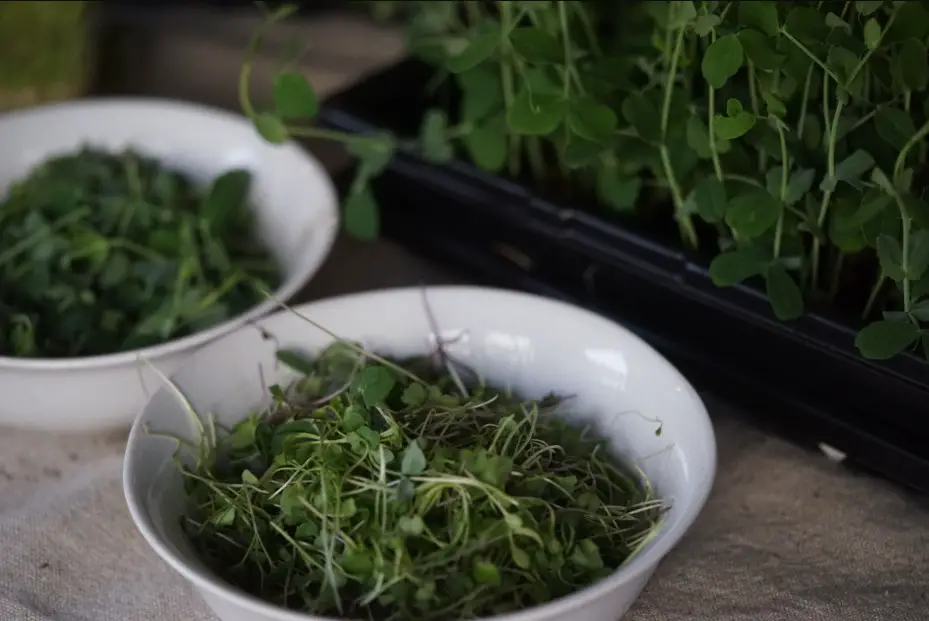
Contents
The benefits of dehydrating microgreens
Enhanced storage life. Fresh microgreens can be stored fresh for only up to two weeks. Dehydrating microgreens significantly extends their storage life.
Removing moisture from the microgreens inhibits the growth of bacteria and fungi, preventing spoilage and allowing for long-term storage.
Retained nutritional value. Contrary to popular belief, dehydrating microgreens does not lead to a significant loss of nutrients. Dehydration removes moisture from plants, which leads to better-preserving food because dehydrated foods last longer.
While there may be slight reductions in certain heat-sensitive vitamins, the drying process preserves the majority of the microgreens’ nutritional content.
Concentrated flavors. Drying microgreens intensifies the flavors of the plants by removing the water content, resulting in a more potent taste.
This concentration of flavors can add a delightful burst of freshness to various dishes.

Versatile usage. Dry microgreens offer versatility in culinary applications.
They can be crumbled onto salads, sprinkled on soups and stews, incorporated into baked goods, or even infused into oils and kinds of vinegar.
Compact storage. Dried microgreens take up significantly less space than fresh microgreens, making them ideal for those with limited storage capacity.
They can be stored in airtight containers or vacuum-sealed bags for long-term use.
The dehydration process
Dehydrating microgreens offers a way to preserve their nutritional value and intense flavors.
Harvesting microgreens
To dehydrate microgreens, harvest microgreens when they have reached the desired size.
Select healthy and vibrant plants, free from pests or diseases.
Gently cut the shoots just above the soil level, ensuring a clean and even cut.
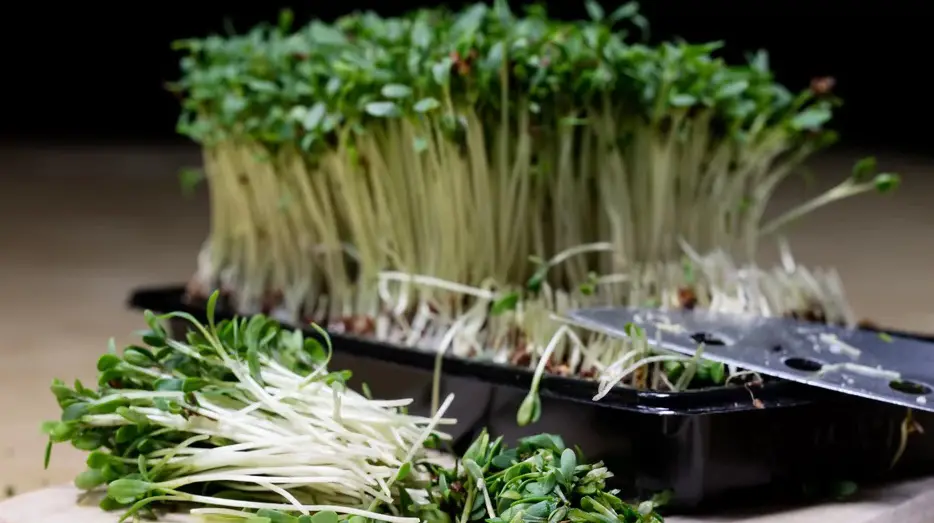
Cleaning and drying
Thoroughly rinse the harvested microgreens under cold water to remove any dirt or debris.
Pat them dry using a paper towel or salad spinner, ensuring they are free from excess moisture.
Preparing the dehydrator
Set your food dehydrator to a low temperature, preferably around 95 °F (35 °C).
If your dehydrator does not have temperature settings, use the lowest heat setting available.
Arranging microgreens
Spread the microgreens evenly on the dehydrator trays, making sure they are not overcrowded.
This allows for proper air circulation and even the process of drying. Avoid overlapping the shoots to ensure uniform dehydration.
Dehydrating time
The drying time for microgreens can vary depending on several factors, including humidity levels, the thickness of the shoots, and the type of dehydrator used.
On average, it takes approximately 4-6 hours for microgreens to dehydrate microgreens.
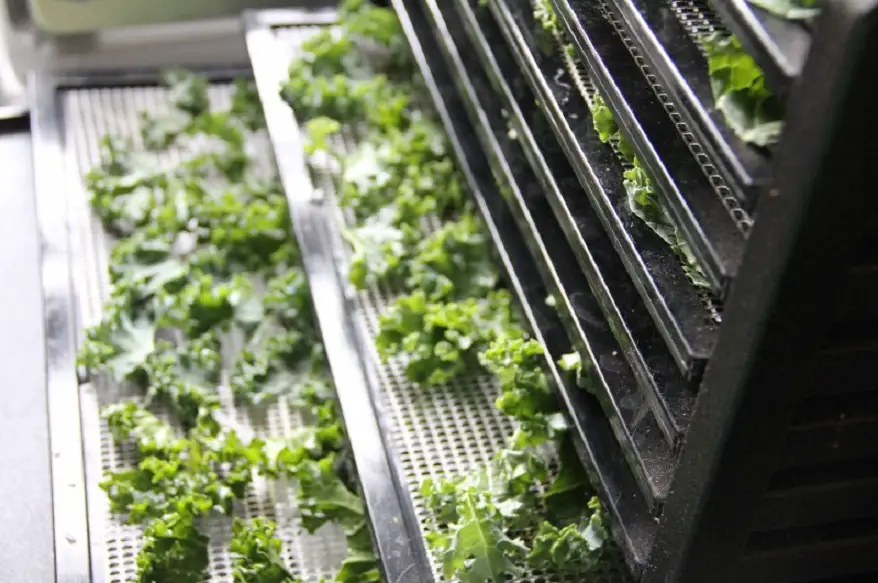
Testing for dryness
To ensure that the drying microgreens process is over, conduct a “snap” test.
Take a small piece of the greens and try to snap it. They are dry and ready for storage if it breaks easily, with no visible signs of moisture. You should have crunchy microgreens.
Cool and store
Allow the dried microgreens to cool completely before transferring them to airtight containers or vacuum-sealed bags.
Store microgreens in a cool, dark place away from direct sunlight, heat, and moisture.
Techniques for dehydrating microgreens
Dehydrating microgreens is a relatively simple process that can be accomplished using various techniques. Here are a few commonly used methods:
- Air drying: This traditional method involves spreading the microgreens in a single layer on a clean, breathable surface, such as a mesh or drying rack.Place them in a well-ventilated area away from direct sunlight, and allow the greens to air dry naturally until they become crispy.
- Oven drying: If you don’t have access to ample airflow, oven drying can be a suitable alternative. Preheat your oven to the lowest possible temperature (usually between 90 °F to 140 °F or 32 °C to 60 °C).Arrange the microgreens on a baking sheet lined with parchment paper and place them in the oven for a few hours until they are dry and brittle.
- Dehydrator: Using a food dehydrator is another popular and convenient method for dehydrating microgreens.Set the dehydrator to a low temperature (around 95 °F or 35 °C) and spread the microgreens evenly on the trays. Allow them to dry for several hours or until they are crisp.
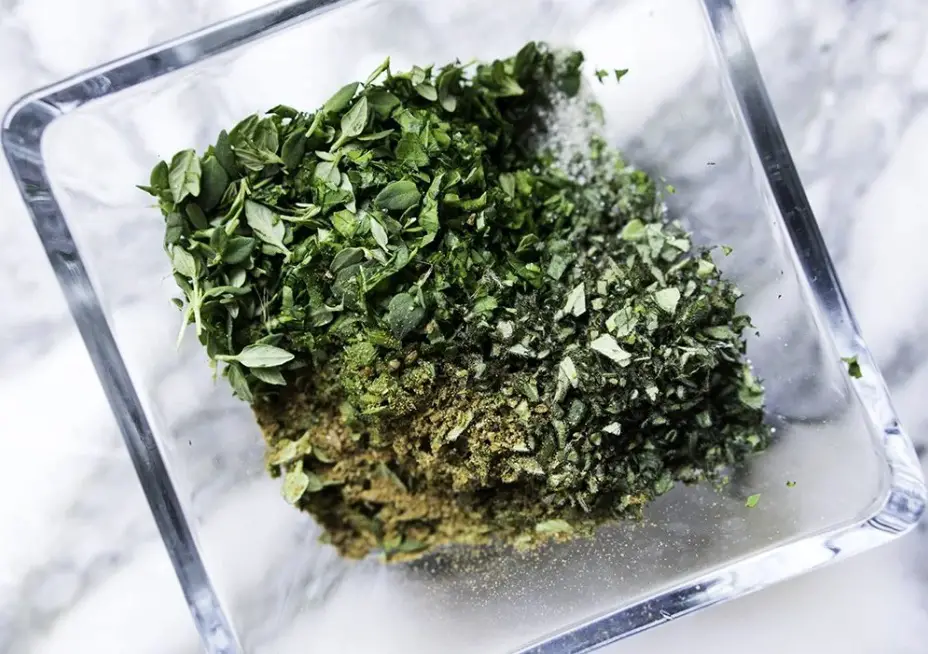
Utilizing dehydrated microgreens
Toppings and garnishes. Use dehydrated microgreens can be crushed or crumbled and used as flavorful toppings for salads, soups, pizzas, and other dishes.
They add a delightful crunch and concentrated taste, enhancing the overall culinary experience.
For example, radish microgreens will be a good addition to your dish because they have a bit of spice in them.
Seasonings and powders. Transform dehydrated microgreens into vibrant green powder by grinding them in a spice grinder or mortar and pestle.
Microgreens powder can be used as natural seasonings for marinades, rubs, dressings, or as a colorful garnish.
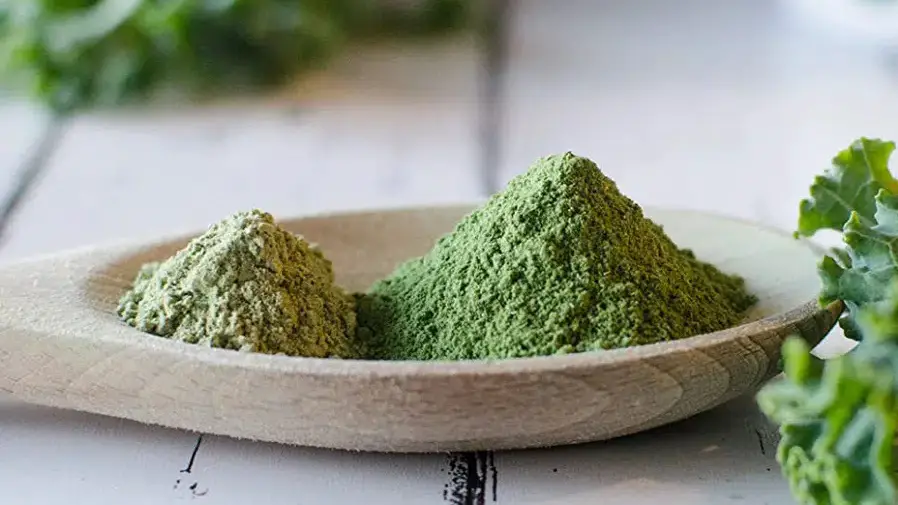
Infusions and extracts. Create infused oils, kinds of vinegar, or extracts by adding dehydrated microgreens to a neutral carrier such as olive oil or vinegar.
The resulting infusions can be used to flavor various dishes or to create unique homemade dressings.
Herbal teas. Certain microgreens, such as basil or mint, can be dried and steeped to make flavorful herbal teas.
Combine the successfully dehydrated leaves with hot water and allow them to steep for a few minutes before enjoying a fragrant and refreshing cup of tea.

Storing dehydrated microgreens
Airtight containers. Store dehydrated microgreens in airtight containers made of glass, plastic, or metal.
Ensure that the containers are clean and dry, and have a tight seal to prevent moisture and air from entering.
Vacuum-sealed bags. Using a vacuum sealer, package the dehydrated microgreens in bags designed for long-term storage.
Vacuum sealing removes the air and creates a moisture-free environment, preserving the quality and flavors of the dried microgreens.
Cool and dark environment. Regardless of the storage method chosen, dehydrated microgreens should be kept in a cool, dark place away from sunlight, heat sources, and moisture.
Proper storage conditions maintain the quality of dried microgreens for an extended period.

The benefits of adding dried microgreens to your diet
- Nutrient-rich powerhouses. Dried microgreens are an excellent source of nutrients, as they retain much of their nutritional value even after the drying process.They are packed with essential vitamins such as A, C, and K, as well as minerals like iron and potassium.Incorporating dried microgreens into your diet ensures you receive a concentrated dose of these vital nutrients.
- Long-term sustainability. By opting for dried microgreens, you contribute to a more sustainable food system.Additionally, the compact nature of dried microgreens requires less packaging, resulting in a lower carbon footprint compared to their fresh counterparts.
- Immune-boosting properties. Microgreens, both fresh and dried, are known for their immune-boosting properties. They contain a high concentration of antioxidants that help combat free radicals in the body, protecting against oxidative stress.By incorporating dried microgreens into your diet, you can support your immune system and promote overall well-being.
- Weight management and digestive health. Dried microgreens are low in calories and high in fiber, making them a beneficial addition to a weight management or digestive health regimen.The fiber content aids in digestion and promotes satiety, helping maintain a healthy gut microbiome.
- Cost-effective alternative. Fresh microgreens can sometimes be expensive, especially when they are out of season. Dried microgreens offer a cost-effective alternative while providing similar nutritional benefits.You can enjoy the goodness of microgreens without straining your budget.
- Allergy-friendly option. Some individuals may have allergies or sensitivities to fresh microgreens.Drying microgreens can reduce allergenic compounds, making them a safer option for those with specific dietary restrictions or sensitivities.
- Prolonged use of harvested microgreens. Drying microgreens allows you to extend the use of your harvested crops.If you grow your microgreens, drying them enables you to enjoy the benefits of your hard work for an extended period, even after the plants have reached maturity.
- A concentrated source of chlorophyll. Microgreens are rich in chlorophyll, the pigment responsible for their vibrant green color.By consuming dried microgreens, you can benefit from the concentrated levels of chlorophyll, which has been associated with numerous health benefits, including detoxification and improved energy levels.
- Improved nutrient absorption. The drying process breaks down the cell walls of microgreens, making the nutrients more bioavailable for absorption in the body.This increased bioavailability ensures that you can make the most of the valuable nutrients present in dried microgreens.
- Enhancing the flavor of your meals. Dried microgreens not only offer nutritional benefits but also contribute to the flavor profile of your meals.Their concentrated taste adds a delightful and unique element to your favorite dishes, enhancing the overall dining experience.
- Added texture and crunch. Dried microgreens regain some of their original texture, providing a pleasant crunch to your meals.This textural element adds depth and complexity, making your dishes more enjoyable.
- Support for eye health. Certain microgreens, such as kale and broccoli, contain high levels of lutein and zeaxanthin, which are essential for maintaining eye health.By incorporating dried microgreens into your diet, you can provide your eyes with the nutrients they need to stay healthy.
- Potential anti-cancer properties. Studies have shown that microgreens, including those that have been dried, possess potent anti-cancer properties.These tiny plants contain phytochemicals and antioxidants that help protect against cellular damage and inhibit the growth of cancer cells.
- Blood sugar regulation. The fiber content in dried microgreens can aid in regulating blood sugar levels.Including dried microgreens in your meals can contribute to better glycemic control and help prevent blood sugar spikes.
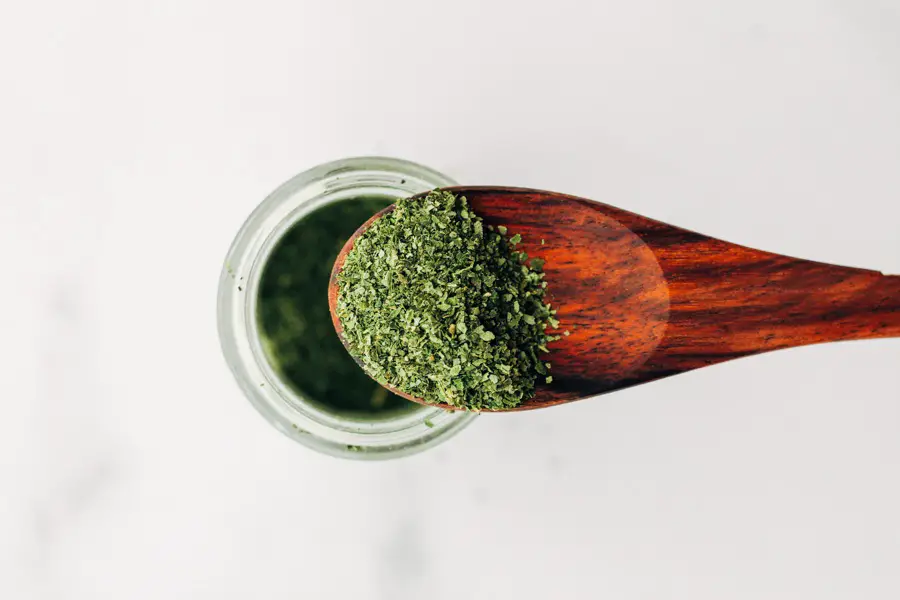
FAQ
If you have any questions about how to preserve microgreens, here are the answers.
Do microgreens lose nutrients when dehydrated?
Dehydrate microgreens may experience some nutrient loss, but the exact extent can vary depending on the specific nutrients and the dehydration process used.
How do you dehydrate pea shoots?
To dehydrate pea shoot microgreens, you can follow these steps:
– Rinse the pea shoots thoroughly to remove any dirt or impurities.
– Pat them dry using a clean kitchen towel or paper towel.
– Arrange the pea shoots in a single layer on a dehydrator tray or a baking sheet.
– Set the dehydrator or oven to a low temperature, around 95-115 °F (35-46 °C), and place the pea shoots inside.
Microgreens can be dehydrated for several hours until they become dry and crispy. The exact time will depend on the moisture content and your chosen method.
Can you freeze-dry microgreens?
Yes, you can freeze-dry microgreens. Freeze-drying involves freezing the dried microgreens and then placing them in a vacuum to remove moisture.
This preservation method helps retain the nutrients and overall quality of the dried microgreens. However, it is worth noting that freeze-drying requires specialized equipment and may not be practical for home use unless you have access to a freeze-dryer.
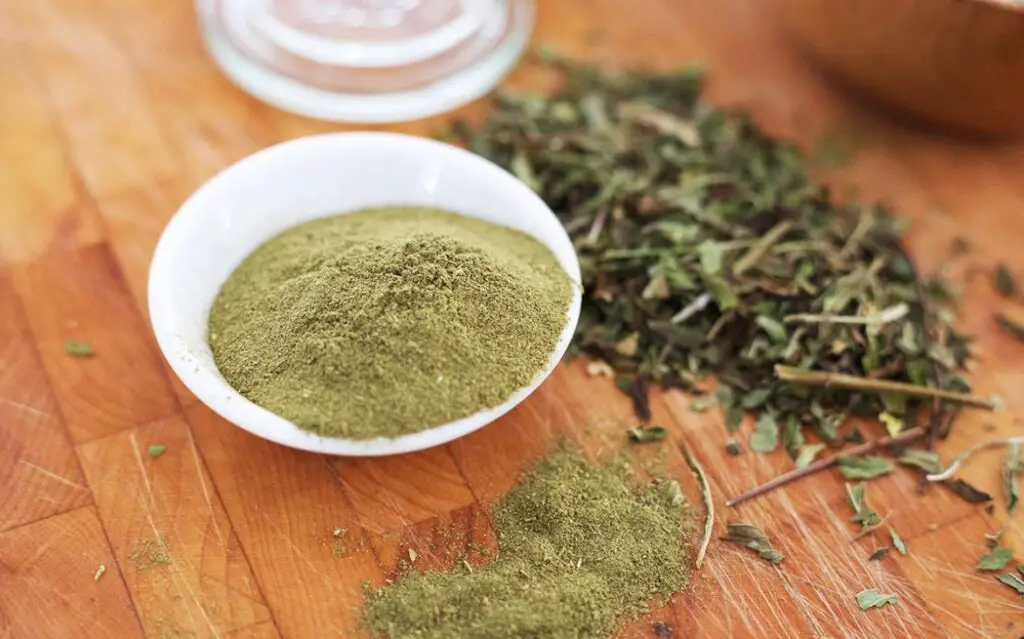
Conclusion
Dehydrating microgreens offers an excellent way to prolong their shelf life while preserving their flavors and nutritional value. The drying methods are simple and allow for versatile usage in various culinary creations.
Whether used as toppings, powders, infusions, or teas, dehydrated microgreens can elevate the taste and visual appeal of dishes. Dehydrated greens can be added to many dishes to make them mouthwatering.
With proper storage, dried microgreens can be enjoyed long after their harvest, providing bursts of freshness and nutrition throughout the year. Experiment with more microgreens and explore the endless possibilities that drying microgreens brings to your culinary adventures.


